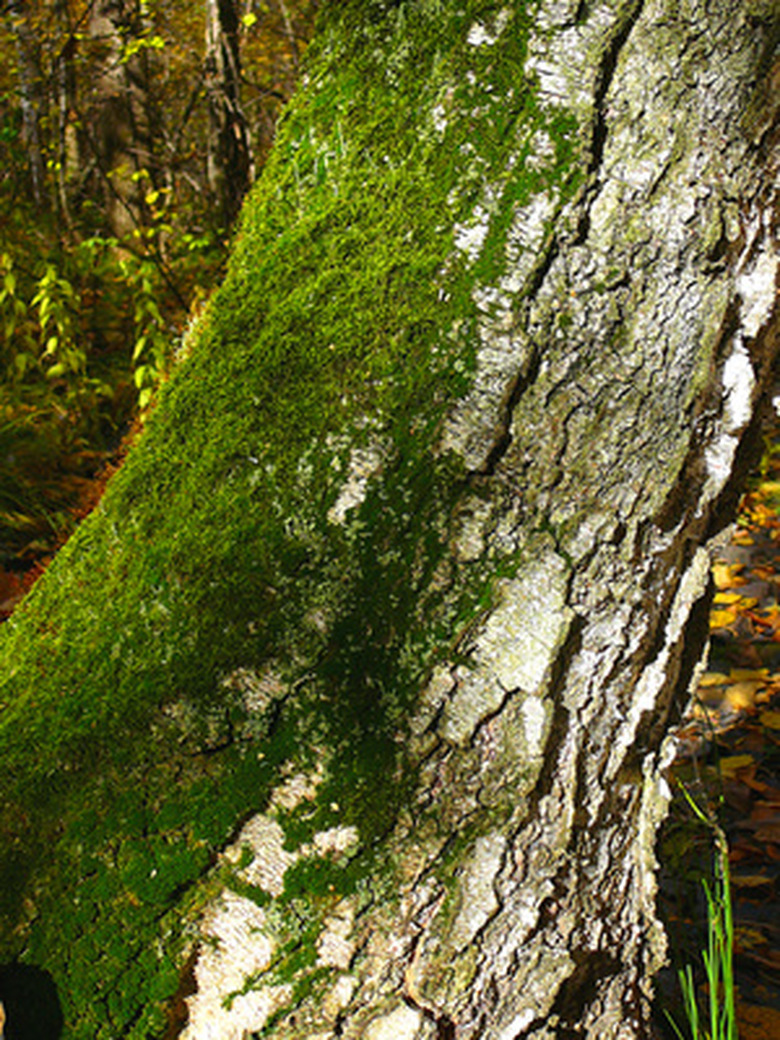How To Get Rid Of Green Moss On Tree Trunks & Cedar Fence
Things Needed
- Moss killer
- Brush or broom
Green moss thrives in areas with poor air circulation, high moisture and indirect sunlight. Whether on a cedar fence or a tree trunk, green moss can be unsightly, but because it draws its nutrients from the surrounding atmosphere, it poses no direct threat to trees or fences. Some even welcome green moss because it is a sign that there is no significant level of air pollution in the area. While these simple plants are quite easy to get rid of, to keep them from coming back you must change their growing conditions and vigilantly monitor new growth.
Step 1
Wet the mossy area of the tree trunk and cedar fence with a hose.
Step 2
Spray the tree trunk or cedar fence until it is thoroughly wet. Your cedar fence and most hardwood ornamental tree trunks can be sprayed with a soapy moss killer containing potassium salts of fatty acids, such as Safer Moss and Algae Killer. These sprays will effectively kill existing moss and inhibit new growth as well.
- Green moss thrives in areas with poor air circulation, high moisture and indirect sunlight.
- Whether on a cedar fence or a tree trunk, green moss can be unsightly, but because it draws its nutrients from the surrounding atmosphere, it poses no direct threat to trees or fences.
Step 3
Leave the spray on the tree trunk and cedar fence for 10 minutes.
Step 4
Brush the dead moss off the tree trunk and cedar fence with a soft push broom or brush.
Step 5
Rinse the tree trunk and cedar fence off with water.
Step 6
Prune the overhead branches. They are likely restricting the direct sunlight and air circulation that will keep green moss at bay. Prune any crossed, broken, small or damaged branches all the way back to the main branch.
Step 7
Keep a look out for and immediately re-treat any moss regrowth.
- Leave the spray on the tree trunk and cedar fence for 10 minutes.
- Brush the dead moss off the tree trunk and cedar fence with a soft push broom or brush.
Tip
Wait until winter, when most trees are dormant, to remove green moss–especially if moss covers the branches as well. This way you are less likely to damage new growth. Redirect any sprinklers that consistently wet the affected tree trunk or cedar fence.
Warning
Fruit trees should not be sprayed with soap-based moss killer. Kill moss on these tree trunks with either copper sulfate or lime sulfur sprays. However, these sprays are quite toxic and must be handled with care and only sprayed on fruit trees in winter when they are dormant. Do not allow the sprays to come into contact with painted or metal surfaces–they are corrosive.
